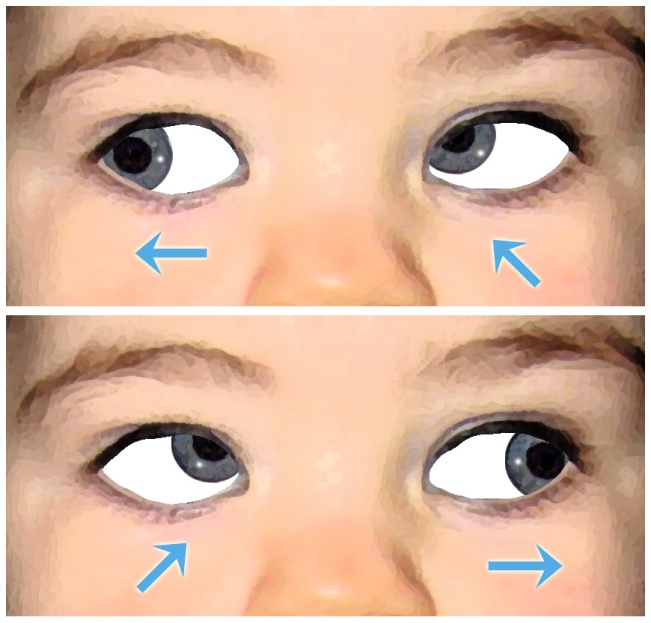The movement of the eye caused by the lower oblique oculomotor muscle is upwards and inwardly (nasally).
The movement of the eye caused by the lower oblique oculomotor muscle is upwards and inwardly (nasally). Therefore, the hyperfunction of the inferior oblique muscle is manifested by upwardly shifting during the adduction (when the eye is looking towards the nose), which is the position in which the muscle’s action is largest.
Usually, it involves the lower oblique muscles of both eyes, so at the lateral eye positions, left or right, the eye which is near the nose displays anotropia.
Often the disease appears as the V phenomenon, which means that at the upper gaze position the eyes diverge though in the lower gaze position the eyes converge (forming a «V»).
If anotropia is significant, surgery of weakening the inferior oblique muscle may be needed. If a horizontal deviation coexists, it must also be corrected and during the same surgery.

Hyperfunction of the inferior oblique muscles in both eyes: When the child looks towards his right,his left eye additionally performs an upper turn. Similarly, when he’s looking towards his left the right eye is directed upwardly.
 German
German Ελληνικά
Ελληνικά